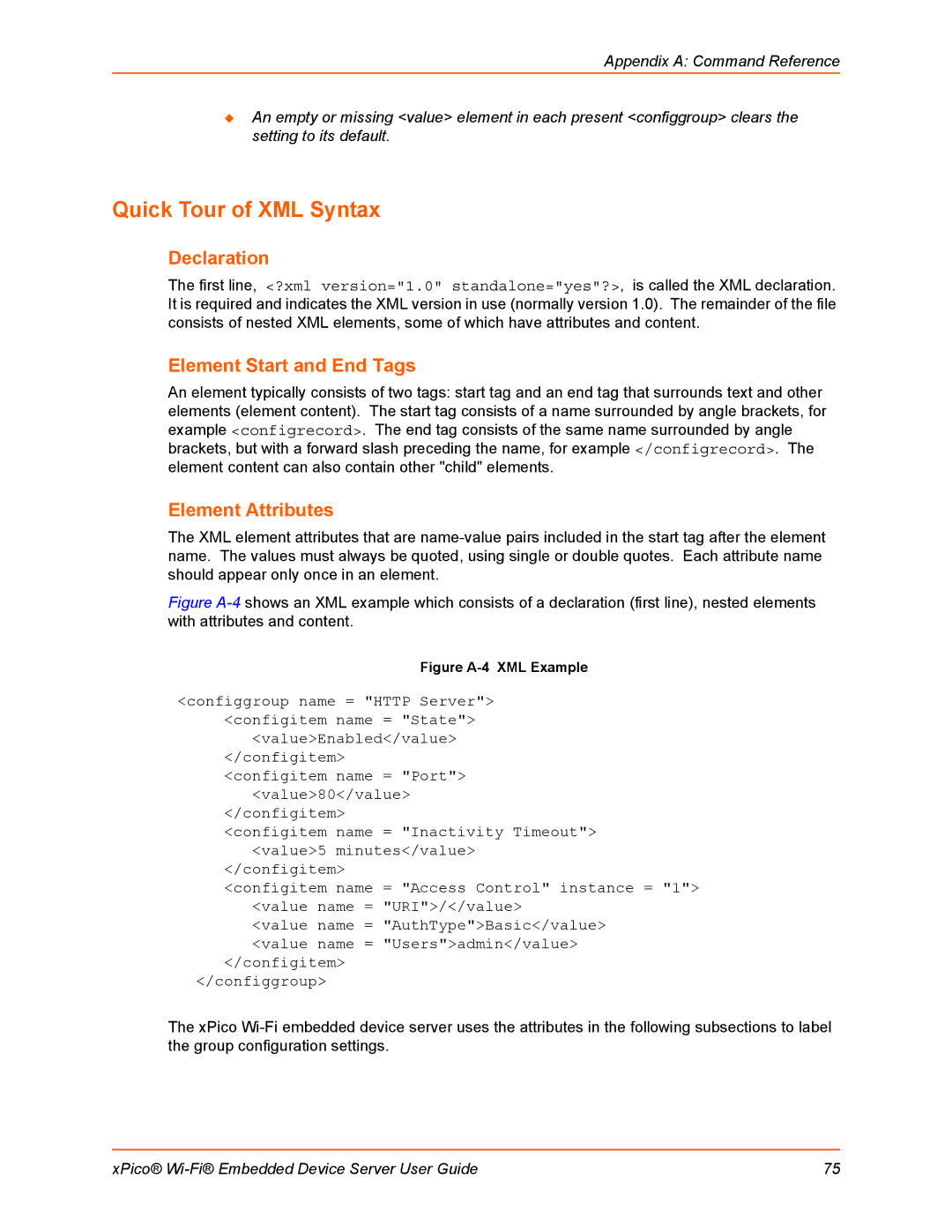
Appendix A: Command Reference
An empty or missing <value> element in each present <configgroup> clears the setting to its default.
Quick Tour of XML Syntax
Declaration
The first line, <?xml version="1.0" standalone="yes"?>, is called the XML declaration. It is required and indicates the XML version in use (normally version 1.0). The remainder of the file consists of nested XML elements, some of which have attributes and content.
Element Start and End Tags
An element typically consists of two tags: start tag and an end tag that surrounds text and other elements (element content). The start tag consists of a name surrounded by angle brackets, for example <configrecord>. The end tag consists of the same name surrounded by angle brackets, but with a forward slash preceding the name, for example </configrecord>. The element content can also contain other "child" elements.
Element Attributes
The XML element attributes that are
Figure A-4 shows an XML example which consists of a declaration (first line), nested elements with attributes and content.
Figure A-4 XML Example
<configgroup name = "HTTP Server"> <configitem name = "State">
<value>Enabled</value>
</configitem>
<configitem name = "Port"> <value>80</value>
</configitem>
<configitem name = "Inactivity Timeout"> <value>5 minutes</value>
</configitem>
<configitem name = "Access Control" instance = "1"> <value name = "URI">/</value>
<value name = "AuthType">Basic</value> <value name = "Users">admin</value>
</configitem>
</configgroup>
The xPico
xPico® | 75 |
